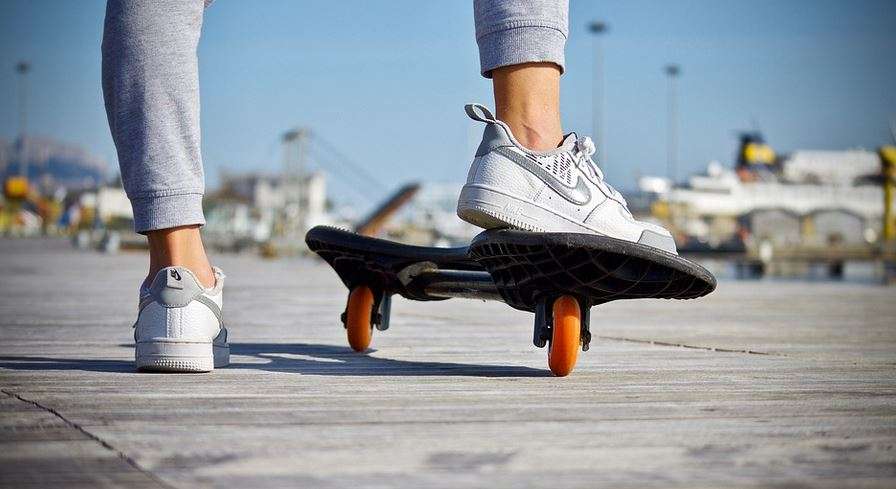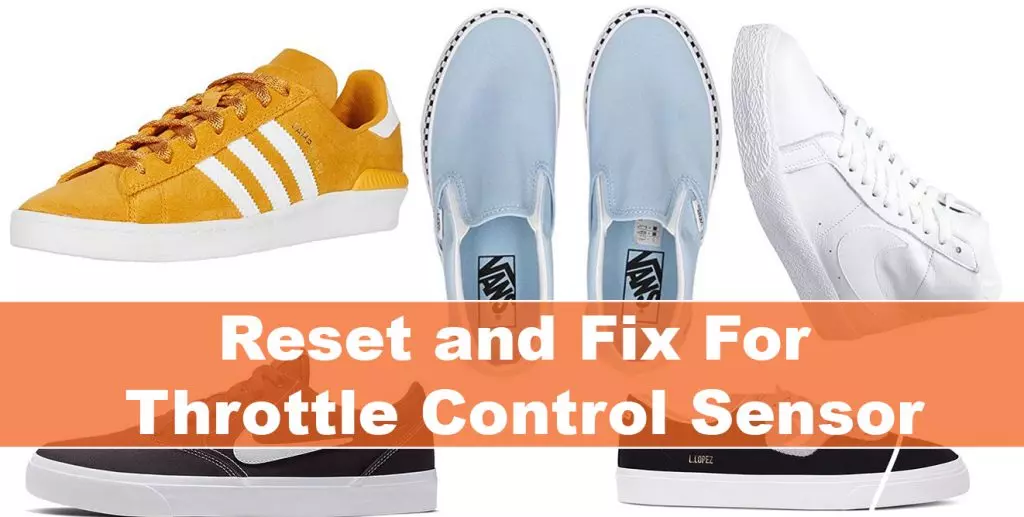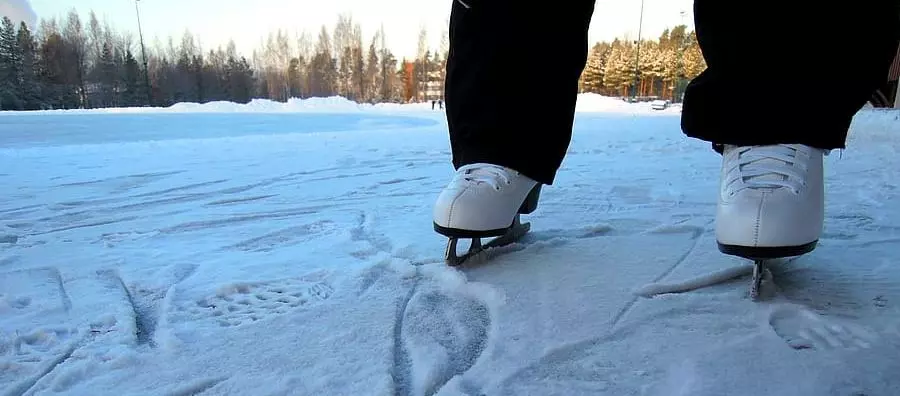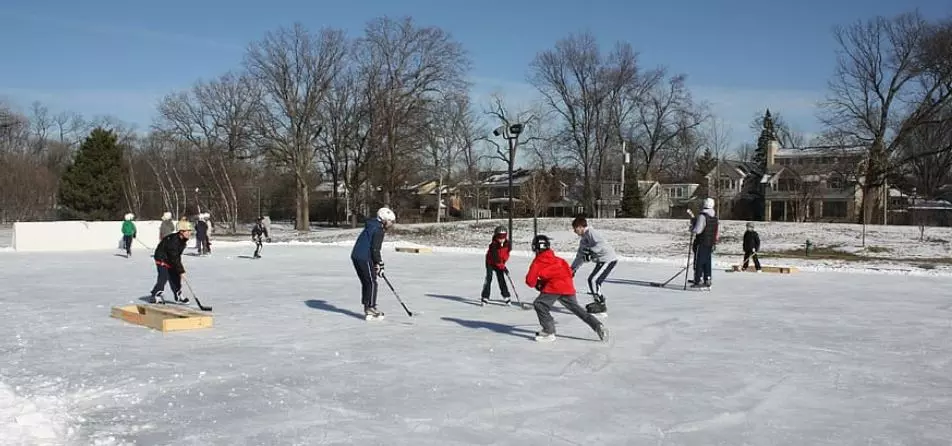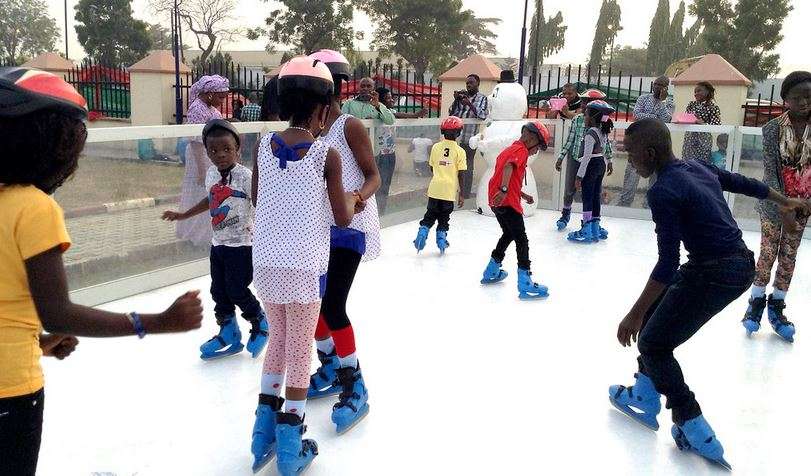Do you want to improve your figure skating balance? Learning to balance when skating is an essential skill. I’ve put up this complete tutorial to assist you in understanding how to improve your balance while figure skating. And then I went on to discuss 17 excellent balance exercises for figure skaters. why figure skaters need balance to improve their performance. (What Type of Force is Ice Skating?)
Many beginning and intermediate figure skaters struggle with how to improve their balance. However, perfecting your balance promptly can aid in the prevention of ice skating-related injuries when you fall on the complex, ice-cold rink surface.
That’s why it’s critical to work hard to find your balance when figure skating. However, it is not a stroll in the park, especially if you do not have a personal trainer. The good news is that I’ve put together this comprehensive guide to assist you in breaking through the ice and learning quickly. To lose weight please read this article.
Keynotes of this article:
- How can I improve my figure skating balance?
- Why do figure skaters need balance?
- How to improve balance for ice skating as a beginner
- How do you get your legs like a figure skater?
- What are the essential rules of figure skating to observe?
- 17 excellent top balance exercises for figure skaters
How can I improve my figure skating balance?
Ice hockey and figure skating are two of the most effective ways to increase (and maintain) cardiovascular fitness in the winter.
To thrive at these exercises and avoid injury, you’ll need a strong level of lower body strength and hip mobility, just like snowshoeing and skiing. To improve and stay balanced on the ice, you’ll also need strong core muscles and stability.
A strain, tear, or rupture of the adductor (inner thigh) muscles, often known as a groin strain, is one of the most prevalent hockey or skating-related injuries. When your leg is brought back into the center of your body after a stride on the ice, the adductor muscles are engaged, and they are stretched when your leg extends out to the side. The exercise in our routine below will help to strengthen the above-listed muscle group, which will help you avoid injury.
Muscles and joints might grow tighter as we age, so before you hit the ice, make sure you do at least 10 minutes of full-body warm-up exercises. Include these three strength moves in your regular workouts two to three times each week.
1. Sumo Goblet Squat
In hockey and figure skating, Groin strains are caused by muscle imbalances between the inner thigh and the outer hip and glute. The inner thigh muscles are frequently weak compared to the outer thigh muscles.
The sumo squat is an excellent exercise for strengthening your inner thigh muscles (together with your quadriceps and glutes) and improving hip mobility.
Stand with your toes pointing slightly out and your feet slightly wider than hip-width. At chest height, hold a dumbbell or kettlebell. Squat down until your thighs are parallel to the ground, then hinge your hips back behind you. Return to standing by pressing your feet onto the floor.
Make sure your back is flat, and your chest is up throughout the workout. Rep as many times as you’d like. Aim for three sets of ten to twelve reps with a weight that feels extremely challenging at about seven reps.
2. Deadlifts on one leg
This workout stimulates your hamstrings and glute while improving ankle stability and balance. It also stimulates the hip hinge position required on the ice. Stand on your right leg with a dumbbell in each hand. Keep your right knee slightly bent as you swing your hips back and extend your left leg behind you.
With the dumbbells, reach halfway down your shin, and then press your right heel into the floor to return to standing. Switch sides after completing all repetitions on the right leg. Aim for three sets of 10-12 reps with a weight that feels difficult after around seven repetitions.
3. Stir the Pot
For my older clients, this is one of my favorite core exercises. It’s difficult, but it’s gentle on the wrists and knees for those with arthritis or other joint issues.
Put your toes on the floor, feet hip-width apart, and forearms on a stability ball in a plank position. Tuck your pelvis slightly to flatten your low back. Brace your abdominal muscles. Breathe smoothly and move your arms clockwise, causing the ball to roll in small circles.
Finish all repetitions, and then switch directions. Only your arms should move; your body should remain stable. Aim for three sets of 12-15 reps in each direction. Once you’ve mastered that, you can make the exercise more challenging by elevating your feet on a bench.
Related article: Are Skating Rinks Open in the Summer & Are Skating Rinks Cold
Why do figure skaters need balance?
Figure skaters need balance Because most skating is done on one leg, balance skills are an essential part of a performance training program and can help enhance skating ability. Joint stabilization during movement is required for balance, which all athletes strive for and perform at their very best.
Because most skating is done on one leg, balance skills are an essential aspect of a performance training program and improve skating ability. Balance necessitates joint stabilization during movement, which all athletes strive towards.
Different degrees of balancing training should be undertaken to improve this ability. Strict technique throughout these balance levels will aid in the improvement of all elements of training while reducing the chance of injury.
All athletes should start with workouts that will test their stability without causing them to lose control. Without correct control, compensations will rise, as will lousy movement patterns and habits and decreased neuromuscular capacity. how to Practice Ice Skating at Home this is a beginner guide you can follow.
Keynote
A systematic approach to balance training, when implemented correctly, ensures optimum efficiency throughout the body. Balance training should become more complex as control and technique improve. Standing on a half foam roller or working on an Airex pad are two examples of such obstacles.
When employing more unstable tools, extreme caution must always be exercised. It is essential to seek out the guidance of a certified trainer who can teach good form and safe progressions.
How to improve balance for ice skating as a beginner
If you’ve been skating since your early teens and want to show off your talents, work on increasing your balance. Controlling your balance on the ice might help you avoid falling and potentially injuring yourself.
Exercises to improve your balance abound, and they may be tailored to your abilities; start with simple balancing exercises and gradually raise the complexity to push yourself. You’ll be skating like the ice princess you always imagined yourself to be in no time.
Here’s a quick review of how to improve your balance while ice skating.
1. Balance on a Single Leg
- Step 1: Face forward; your feet should be roughly hip-width apart, and your arms should be extended at your sides.
- Step 2: Suck in your stomach to tighten your abdominal muscles and maintain your back straight. Assume you’re trying to zip up a pair of too-tight jeans.
- Step 3: Bend your left knee 90 degrees, lift your left foot off the floor behind you, and shift your weight to your right foot.
- Step 4: Switch to your left leg after balancing your right leg for as long as possible. Rep the exercise eight times more or until you’re stabilizing muscles are exhausted.
- Step 5: Increase the difficulty once you’ve managed to keep your balance on each leg for 30 seconds. Do the single-leg balance exercise with your eyes closed or standing with your stabilizing leg on an unstable surface, such as a pillow, to make it more difficult.
Making circles in the air with your non-working leg’s foot increases the difficulty. Combine all three for a true challenge: stand on a pillow, close your eyes, and perform leg circles.
2. Skating Jumps
Step 1: Form a skating stance by bending forward at the hips until your torso is nearly parallel to the floor. Tighten your tummy muscles to support your back, bend your knees, and put your right foot about a foot ahead of your left.
Your weight should be on your right foot, and your body should be close to the floor to make it easier to maintain your balance.
Step 2: Shift your weight to your front right foot, push off on the floor, and hop-forward and slightly outward with your left foot, swinging your right arm forward and your left arm back to help you balance.
Land on the ball of your foot, shift your weight to your left foot, and gradually lower your heel. Avoid standing upright while hopping; instead, keep your body close to the floor at all times.
Step 3: As you hop forward, alternate your legs and arms; your movement should resemble that of a skater. Hop forward until you can’t maintain proper form any longer, then take a break and repeat the exercise twice more. Begin with small hops and gradually increase your hop size as you gain control.
3. Squats on One leg
Step 1: Stand on your left leg and raise your right knee to hover above the floor in front of you.
Step 2: Lower yourself to around 45 degrees by contracting your abdominals, bending your left knee, pushing your tush back, and bending your left knee. Assume you’re lowering yourself to take a seat in a chair. Throughout the exercise, keep your chest up and your face forward.
Step 3: Before switching legs, push yourself back up to the beginning place and continue the exercise eight to twelve times. Complete three sets, grabbing a wall or a chair for support if necessary. Perform the exercise while balancing on an uneven surface for an added difficulty.
How do you get your legs like a figure skater?
Figure skating necessitates the lower body’s strength, power, balance, and stability during competition, not to mention the stamina required to complete a four-and-a-half-minute free skate program.
The legs of a skater must be strong enough to perform edgework and sequences, powerful enough to launch into the air during a jump like an axel or a lutz, and stable enough to land those leaps gracefully.
So, how do we get the legs ready to meet these challenges? We must first consider the sport and what the body does during it. Figure skating is primarily done on one leg at a time; hence, training must address this.
Keynote
This doesn’t mean double-leg movements like the squat and deadlift shouldn’t be included in a workout, but single-leg strength training should be the priority. The program will be more successful if broken down, and the three primary parts are addressed throughout each session.
Depending on the time of year, exercises that emphasize overall strength, power, explosiveness, balance, and stability should be included 2-4 times per week. Here are some examples of how you can improve your ice skating abilities.
1. Strength
One thing to keep in mind is that we should only use moves that can be done on ice. This comprises a broad range of motion and the use of many muscles in tandem.
- Ascending Steps: The box height varies depending on the athlete’s height, but a twelve-inch box works well in most cases. The athlete just stands up with one leg on the box and raises their body into the air. The idea is to keep your weight on the boxing leg, with your knee slightly over your toe and your chest slightly forward. Raise the body fast and slowly descend it to the ground. Increase the intensity by adding weights. The quadriceps and glute muscles will be the emphasis.
- RDL with one leg: The skater begins by standing tall and bending at the hips, lowering the hands to the floor while simultaneously raising one foot into the air. The in a seesaw movement, in a seesaw movement The foot raised in the air should be pointing down towards the ground during the exercise. To intensify the intensity, weights can be put to the hands. The glutes and hamstrings should be the main focus. If you have stiffness or soreness in your lower back, you may be doing the exercise wrong.
2. Power
These workouts, often known as plyometrics, can enhance jump height, allowing the athlete to complete more revolutions in the air in less time.
- Standing on one leg, squat halfway to parallel and jump as high as you can with your arms to create momentum. Land on the same leg, absorbing the ground while bending at the knee and hip. During the jump, try to keep the knee beneath the hip and come to a complete halt after landing. The emphasis is on jumping with maximum effort across the entire lower body.
- Start in a crouched position on two legs (yep, this is a two-legged workout) and jump as high as you can while spinning 90 degrees. Concentrate on achieving maximum jump height and a robust and steady landing by bending your knees and hips and absorbing the impact. Repin the opposite direction after four jumps for a full rotation. The entire lower body and core are emphasized for maximum jumping height and a stable landing.
3. Balance and Stability
These exercises are designed to help you maintain a stable base as your upper body moves or keep you balanced.
- Standing on one leg with a slight bend at the knee and hip, perform a single leg stance with a kettlebell swing. Swing the arm back and forth freely like a pendulum, holding a kettlebell or comparable weight in the opposite hand. The weight’s swinging will try to knock you off your feet. The hip muscles on the leg you’re standing on will be the emphasis here.
- Standing on one leg with a slight bend at the knee and hip, perform a single leg stance with a kettlebell swing. Swing the arm back and forth freely like a pendulum, holding a kettlebell or comparable weight in the opposite hand. The weight’s swinging will try to knock you off your feet. The hip muscles on the leg you’re standing on will be the emphasis here.
What are the essential rules of figure skating to observe?
Figure skating can be a team or solo sport that requires flexibility, strength, and grace. Figure skating aims to perform a choreographed routine on an ice rink to gain the most points. Figure skaters must always wear figure skates when they enter the rink.
Figure skaters are skates with thick, hollow steel blades about four mm thick on the bottom and have edged grooves in the front. The toe pick refers to the front section of the shoe. Stakers can better manage their footwork using the toe pick. Figure skating costumes are an essential component of the sport.
Tights, trousers, or a unitard with a skirt over are recommended for males, and tights, trousers, or a unitard with a skirt over are required for women. Inappropriate costumes, such as excessive decoration or over-exposed, will deduct points from their score, or the skater would be disqualified outright.
The Goal of the Game
Although there are many ways to score points depending on the type of event, the overarching goal in Figure Skating is to get the highest possible score from the judges.
Athletes in all Figure Skating contests must perform a variety of moves to receive the maximum possible score from the judges. Athletes will perform a variety of spins, hops, and steps during a typical performance.
Athletes compete in pair skating contests by doing acts to obtain high points, such as throwing a partner in the air and spinning them in various directions. Ice dancing is similar to pair skating, except the emphasis is on footwork and synchronization as partners dance together in time to music played overhead.
Players and their gear
Figure skating is a sport in which both men and women compete, and the only equipment required is a pair of specially designed skates known as “Figure Skates.”
Here are Rules of Figure Skating
- One of the rule s of figure skaters is that, skaters must keep their performances interesting. This is according to the Zayak Rule; no contestant can attempt triple or quadruple leaps more than twice.
- Content must follow music and costume guidance especially if they are competing. If contestants do not follow the rules and regulations for music and costumes, judges may penalize them or disqualify them entirely. Specific genres of music are prohibited, and clothes must not have “excessive adornment” or be overly exposing.
- And finally figure skating rule also requires that an athlete who breaches time should be disqualified.
17 excellent top balance exercises for figure skaters
Skaters make it look easy, but spinning, jumping, and sticking those landings on the ice takes a lot of strength and stability. Dan will walk you through some of the most incredible workouts you can do at home to improve your skills, which you can find below. You may need to read this article on choosing the right Best Skate Shoes for your skating balance right.
Figure skating is a sport that requires a great deal of strength and flexibility. Because racing requires a lot of sideways movement, lateral strength workouts will help you enhance your turns and speed.
You’ll also need a lot of core strength to keep your body in control. Finally, figure skaters require muscular asymmetric strength to accomplish one-legged abilities.
Here’s a quick review of the top balance exercises for figure skaters.
1.Use a Bosu Ball to practice.
A Bosu ball is half the size of a regular ball. Because of the instability, standing on the ball can be difficult. That’s why using a Bosu ball to practice your balance might help a lot. Place the Bosu ball on a flat surface, and then stand with one foot on the ground and the other dangling in mid-air.
2.Master the Art of Outside Edging
Skating on the outside edge can help you maintain your balance. Skating on the outside edge, on the other hand, is complex and uncomfortable since you’re more prone to lose your balance. As a result, many beginners and intermediate skaters prefer to skate on the inside edge, pronating their feet.
3. Body Muscle Strengthening for Ice Skating
After that, you can strengthen your body muscles in preparation for figure skating. Beginner skaters frequently lose their balance because of their underdeveloped foot and leg muscles. The good news is that there are several exercises you can take to strengthen your muscles in preparation for ice skating.
4. Make sure you’re in the correct figure skating position.
Having the proper ice skating posture will help you achieve the balance and stability you require to figure skating. However, many novice and intermediate skaters find it challenging to execute. So, what is the proper ice skating stance, you might wonder?
5. Skate More Frequently
Skating regularly assists in strengthening your body muscles and provides you with the muscle strength you require. But it doesn’t end there. The trickle effect is that strong muscles aid balance and stability, which is precisely what you want.
6.On a flat surface, perform one-leg raises and squats.
Squatting while standing on one leg is similar to utilizing a Bosu ball. These workouts will develop your foot, leg, and gluteus muscles, providing you with the stability you’ll need when ice skating. As a result, execute these exercises for 5-10 minutes several times a week to improve your ice skating balance.
7.Use a Slider Board to practice.
The slider board allows you to practice on a surface comparable to an ice skating rink. The board isn’t made of ice, so that’s the only difference. But, in general, it’s as smooth and slick as an ice skating rink.
8. Exercise with a Scooter (one leg push)
The scooter exercise is similar to how you would ride a scooter. It’s an essential exercise that strengthens your foot muscles while improving balance and stability. Put on your ice skates and steadily propel yourself forward with one foot while the other remains firmly planted on the ice.
9. Use a Dumbbell and a Soft Pad to practice.
Dumbbells and two soft pads are required for this exercise. To begin, place the two soft pads behind you and stand a few inches away from them while holding the dumbbells in both hands. Squat down on one foot while resting your knee on the soft pad. Repeat the exercise 10-15 times for a minute or two, then reduce the number of soft pads to one instead of two.
10. Use a Booyah Stick and a Soft Pad to practice.
It’s the same as if you were using a dumbbell. The only difference is that you’ll be using a Booyah stick instead of a dumbbell. Otherwise, train your foot and gluteus muscles as directed to maintain a firm and steady balance when skating.
11. Clamshells
Begin by lying on your side, knees bent at 90 degrees, hips and shoulders stacked, and a resistance loop wrapped around your legs.
12. Abduction on the Side
This is an excellent approach for skaters to warm up their gluts, especially the glute medius, to improve their jumping and landing mechanics during their routine.
13. Plank on the side
This is one of the best COMBO exercises, with excellent glute and ore stabilization, which figure skaters need for individual and pair competition.
14. Leg Lifts in the Supine Position
Skaters can move their upper and lower bodies with a stable trunk by focusing on slow controlled motions of the lower abdominals.
15. Touching your toes
To manage their bodies during their sport’s frenetic motions, figure skaters need a lot of core strength and stabilization.
16. Leg Lifts in the Supine Position
Skaters can move their upper and lower bodies with a stable trunk by focusing on slow controlled motions of the lower abdominals.
17. Stretch your hip flexors.
Stand with your feet 3 to 4 feet apart, the front foot 3 to 4 feet ahead of the back foot. Allow the back heel to lift while bending the front knee precisely over the toes with hands-on-hips and core supported. Keep your chest up and your front shin vertical as you lunge down. To feel a stretch at the front of that hip, straighten the back leg and squeeze your glutes. Hold each side for 30 seconds.
FAQs
Why am I so bad at ice skating?
Fear. Fear is the worst opponent, as it always is, and even the fittest and most capable people can become hopeless if they can’t overcome it. I’m not talking about your mind drawing broken limbs and red ice under a bleeding nose; I’m talking about actual, animal-level panic.
Quick test: if you can’t push yourself to jump on skates while standing still, it’s most likely the case. If you think (or your friends tell you) that you appear worried, rigid, and tense, it’s usually the result of low-level dread at work.
The advice here – sorry, you’ll have to live with it – you’ll have to work twice as hard to overcome your inner obstacles because you spend most of your time-fighting fear and not learning anything new. On the plus side, if you’re patient and believe in yourself, it’s still doable.
How long does it take to learn how to skate on the ice?
It should take you between 7 and 10 hours to learn the fundamentals. That was not accomplished in a single day but over two months. That’s about an hour once a week. Even great if you could go twice a week. You will sleep in between practice times if you make several journeys to the rink, making the learning process easier.
What to wear ice skating indoors?
Ice skating is a pleasurable activity, especially when done with friends. However, you must prepare yourself before the game. Because if you do not wear the appropriate clothing, you risk becoming ill and in pain.
The following items must be brought with you when going indoor ice skating:
To begin, put on a comfortable sweater to keep your body warm. Then put on your covered-up-to-the-ankle leggings and remind yourself that these are not jeans. Because wearing jeans may bring you discomfort. Of course, gloves and ear caps should be worn to keep the hands and ears warm. Even when skating, it’s vital to wear long socks to keep the foot from being inflamed. The most important thing is to use caution. If you bring them together when indoor ice skating, maybe it won’t be a problem. How is that Skating is Possible on Ice

